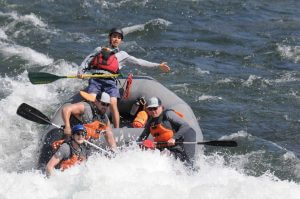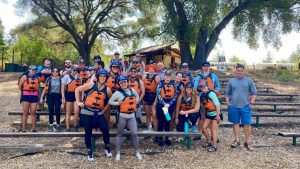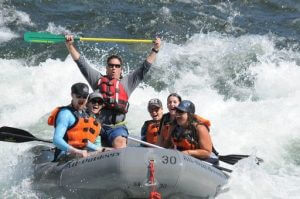
By Gary Link, NCWA Legislative Affairs Director
“A river doesn’t just carry water, it carries life.” Amit Kalantri
You look up and see a huge wave of water rising above you, your grip tightens on the paddle, you involuntarily hold your breath, you hear the guide calling out commands, but your focus remains on that wall of water now cascading over you and your raft mates. You are drenched, invigorated, smiling with pure intensity, and the whole crew starts paddling together making sure the raft does not become stuck on the huge granite boulders ahead. That’s just one of the many whitewater rapids you faced on the river, and by the end of the trip you know that working together made for a productive and fun filled day. Ironic how a whitewater rafting trip can be a great analogy for water policy work.
Collaborating on water policy and water solution implementations in California is a productive pathway forward. Be it in a coalition, at your local farm, in your community, in the Legislature, in the Governor’s office, or when barreling towards rapids in a raft. Without collaboration, particularly in a dry year like 2021, we all may fail for fish, farmers, fowl, floodplains, and for safe drinking water.
Communication
Prior to any whitewater rafting excursion all involved get together to discuss the day’s events, the unique occurrences that may become a reality, discussing each person’s role throughout the day, and making sure a shared vision is present and accepted by all proactive participants. Likewise, in water policy work good communication is key to productive results. Take the Butte Creek chinook salmon restoration project where the federal, state, and local governments, nonprofits, and farmers communicated effectively to create a sustainable fish passage reality allowing spring run chinook salmon populations to increase dramatically after the work and continue to do well over time.
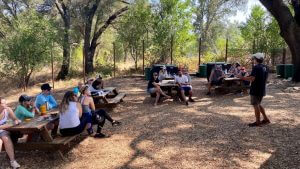
Making Adjustments
While on the river you prepare prior to entering any large rapid. Your communication is delivered and it’s time to act. Yet in the middle of rapids, you learn the river current can change raft direction quickly and your coalition team must make adjustments as quickly as possible for the best possible outcome. Similarly, the Legislature, Governor’s Office, Third House, citizens, and water stakeholders worked through many changes of what became Proposition 1 in 2014. Many Legislative amendments came and went as all the above worked together from 2009 to 2014 to fund habitat projects for fish and wildlife, to fund safe drinking water solutions, to fund increased surface water, and to fund water resiliency in our ecosystem. Much of that funding focused on increasing salmon populations, and Northern California Water Association (NCWA) continues collaborative efforts among farmers, conservationists, universities, and state and federal agencies proving that by reactivating our historic floodplains, by using both our farmlands and using our bypasses during key times of the year, we can create high-quality habitat that produces up to 149 times more food for salmon than the river.
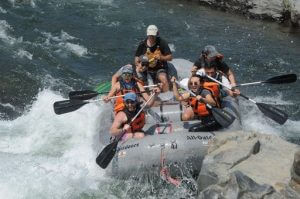
Collaboration
As one paddler starts to paddle forward by themselves from the right side of the raft, they will push the raft into making a slow ineffective left turn. Compare that to when the entire team works together to turn the raft and the movement becomes more efficient and more often than not you attain exceptional results. Take for example the Floodplain Forward work NCWA is collaborating with many wildlife conservation minded nonprofits, business entities, farmers, local governments, landowners, academic institutions, the state Legislature, and the Governor’s Administration on utilizing an effective strategy, paddling together, to reactivate the floodplain. This helps by spreading a shallow amount of water out on the landscape and slowing it down to reconnect with the ecosystem and the sun. These reactivated floodplains produce food and safety for both fish and birds, in addition to recharging underground aquifers.
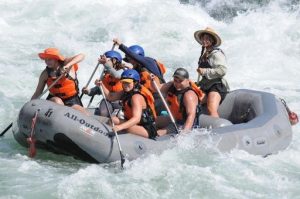
Perilous Rivers
Rivers have immense power, carving granite and land at will. Rafters must stay focused, fix problems quickly, and work together to meet the hydraulic challenges when running rivers. In the Legislature when working on water policy we understand that as individuals we may not attain our singular goal. Yet, working together to fix and not fight on policy and implementation, we can create effective long-term solutions especially as it relates to rivers and fish. Scientific-based data is showing that this new approach to putting river water on the historical floodplain and allowing fish and birds more residence time on these lands improves their health and chances of survival compared to our old approaches.
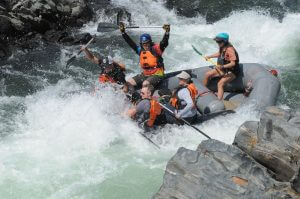
Water Levels, River Flow, and Working With What You Have
Guides and rafters will see vastly different rapids, river scenarios, and water hydraulics depending on the flow of the river. The South Fork of the American river during a normal summer rafting season will see the released cubic foot per second (cfs) flow rate at 1800cfs to 2500cfs. During a drought year, much like this year, one would typically see a released rate of 1300cfs to 1500cfs. These raftable flows, as well as what days raftable flows will be available, and for a specified number of flow hours, are worked out in advance between rafting companies, hydropower producers, local governments, state government, federal government, and water agencies. That collaboration knows water has multiple uses from ridgetop to river mouth and provides multiple benefits, which thankfully includes rafting. NCWA members work with farming/conservation/wildlife coalitions to plan ahead for dry years, including the Administration and the Legislature. NCWA has worked incredibly well with legislative members, legislative staff, and the Administration on drought solutions for current year and for long term drought/flood planning that provides many benefits for wildlife, for wildfire resiliency, for recreation, for groundwater recharge, for farming, for water/climate resiliency, and for floodplain activization.

Reaching Out to Those Who Know
Rafting guides are a must when riding the rapids on any raftable river. They will tell you how important a Class III personal floatation device is before rafting, they will teach you how to hold and utilize your paddle for power on the river, they will instruct how best to meet upcoming rapids and granite boulders, and they will listen and learn from the raft team to make sure everyone is working effectively as you all go down the river. Likewise, water policy is an issue in the Legislature where water knowledge is key. You want to learn about utilizing water efficiently and productively, talk with a farmer; you want to discuss how farmers help wildlife, talk to a farmer; with water policy there are several great minds in the Legislature, at the State Water Resources Control Board, at Department of Water Resources, at Department of Fish and Wildlife, or give Northern California Water Association a call.
